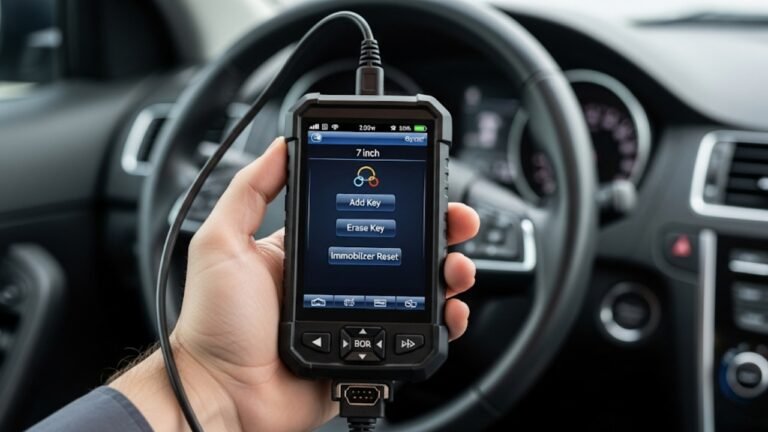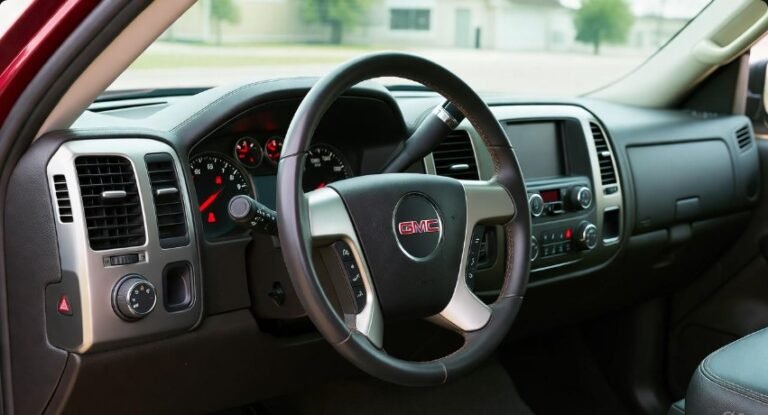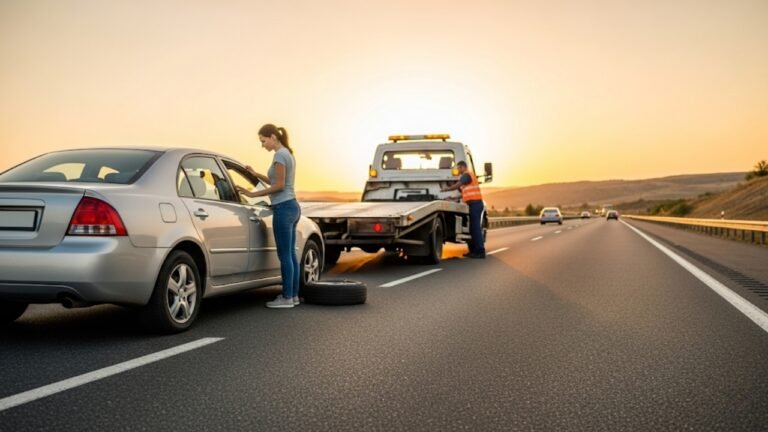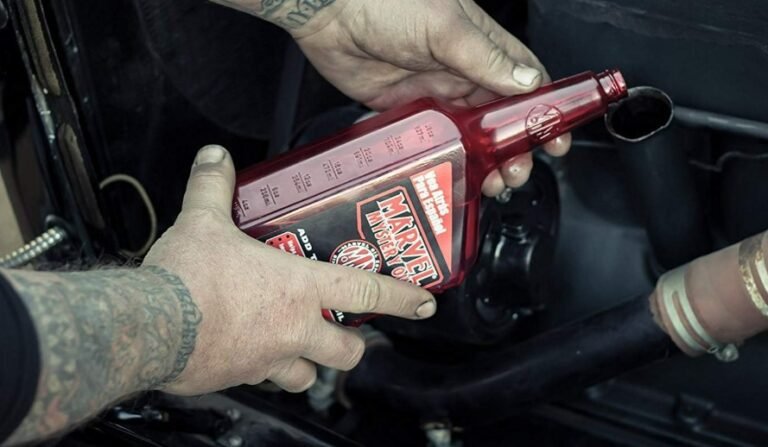Disc Brake Cycle Under 5000: Best Deals
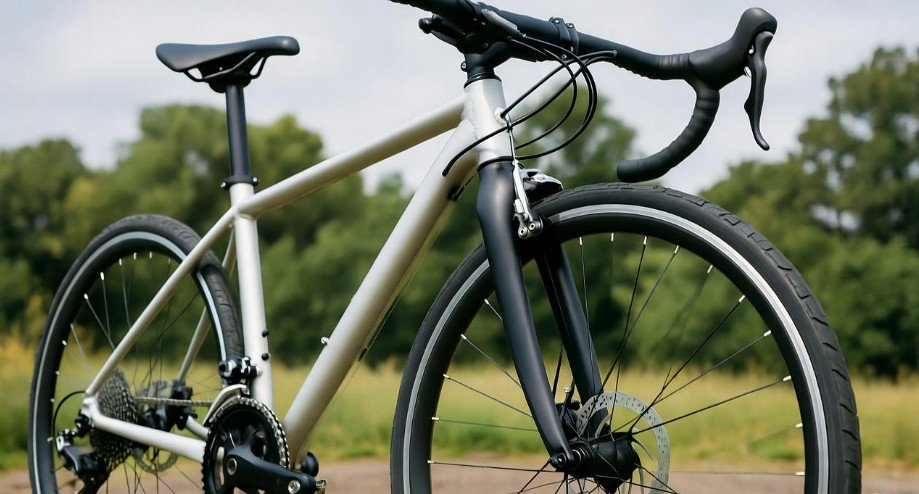
Looking for a dependable disc brake cycle under $5,000? You can find excellent, feature-rich options that offer superior stopping power and control for your daily commute or weekend adventures. Explore the best deals available to get a reliable ride without breaking the bank.
Key Takeaways
- Discover budget-friendly disc brake cycles under $5,000.
- Understand the benefits of disc brakes for safe cycling.
- Compare top models and their key features.
- Learn where to find the best deals and value.
- Get tips for maintaining your new disc brake cycle.
Navigating the world of bicycles can feel overwhelming, especially when you’re searching for a specific feature like disc brakes on a budget. You might be wondering if it’s even possible to find a quality disc brake cycle under $5,000. The good news is, absolutely! In today’s market, many manufacturers offer fantastic bicycles equipped with disc brakes well within that price range. These cycles provide enhanced safety, better performance in wet conditions, and a more controlled ride, making them ideal for everything from city commuting to trail exploration. We’re here to simplify your search and guide you through finding the best deals on a disc brake cycle under $5,000, ensuring you get a ride that’s both reliable and exciting.
Why Choose a Disc Brake Cycle?
Disc brakes have become increasingly popular on bicycles for several compelling reasons. Unlike traditional rim brakes, which press brake pads against the wheel’s rim, disc brakes use a caliper to squeeze a rotor attached to the wheel’s hub. This fundamental difference leads to significant advantages, particularly for riders looking for enhanced performance and safety.
Superior Stopping Power
One of the primary benefits of disc brakes is their raw stopping power. The leverage generated by the caliper acting on the rotor is generally greater than that of rim brakes. This means you can slow down or stop your cycle more quickly and with less force applied to the brake levers. This can be a crucial advantage in emergency situations or when descending steep hills.
Consistent Performance in All Weather
This is where disc brakes truly shine. Rim brakes can be significantly hampered by wet or muddy conditions. Water and dirt can reduce friction between the brake pads and the rim, leading to weaker braking. Disc brakes, on the other hand, are much less affected by adverse weather. The rotors are positioned away from the road’s spray, and the braking action is more direct and consistent, providing reliable stopping power whether it’s sunny or pouring rain.
Better Modulation and Control
Disc brakes offer superior modulation, which refers to the rider’s ability to feather the brakes precisely. This means you can apply just the right amount of braking force needed for a smooth, controlled stop. This finer control is especially helpful for navigating technical terrain, making sharp turns, or simply cruising through city traffic without jerky movements.
Reduced Wheel Damage
With rim brakes, the brake pads constantly wear down the wheel rim over time. This can eventually lead to the rim needing replacement. Disc brakes do not contact the rim at all, thereby preserving the integrity and lifespan of your wheels.
Understanding Disc Brake Types: Mechanical vs. Hydraulic
When you’re looking at cycles with disc brakes, you’ll encounter two main types: mechanical and hydraulic. Both offer advantages over rim brakes, but they differ in their operation and performance. Understanding these differences will help you choose what’s best for your needs and budget.
Mechanical Disc Brakes
Mechanical disc brakes operate using a steel cable that runs from the brake lever to the caliper. When you pull the lever, the cable pulls on a mechanism in the caliper, which in turn pushes the brake pads against the rotor. They are simpler in design, easier to maintain, and generally less expensive than hydraulic systems, making them a common choice for budget-friendly bicycles.
- Pros:
- More affordable.
- Easier to repair in the field.
- Compatible with standard brake levers.
- Cons:
- Less power and modulation compared to hydraulic.
- Require more lever force.
- Cable can stretch over time, requiring adjustment.
Hydraulic Disc Brakes
Hydraulic disc brakes use a fluid-filled hose to transmit force from the brake lever to the caliper. When you squeeze the lever, a master cylinder pushes brake fluid through the hose, which then activates pistons in the caliper to press the brake pads against the rotor. These systems offer greater stopping power, better modulation, and require less effort at the lever.
- Pros:
- Superior stopping power.
- Excellent modulation for precise control.
- Require less lever force.
- Self-adjusting for pad wear.
- Cons:
- More expensive.
- Maintenance can be more complex (bleeding the system).
- More susceptible to leaks if not properly maintained.
For a disc brake cycle under $5,000, you’ll likely find a mix of both mechanical and hydraulic systems. Many bikes in the $1,000-$3,000 range will feature hydraulic disc brakes, offering excellent value and performance. Mechanical disc brakes are more common on bikes below $1,000, but can still provide a significant upgrade in braking over rim brakes.
Top Categories for Disc Brake Cycles Under $5,000
The term “cycle” can encompass a wide variety of bicycles. When looking for a disc brake cycle under $5,000, you’ll find excellent options across several popular categories, each suited for different types of riding. Here’s a breakdown of what to expect:
1. Hybrid Cycles
Hybrid cycles are designed to be versatile, combining features of road bikes and mountain bikes. They typically have flat handlebars for a more upright riding position, medium-width tires for comfort and efficiency on various surfaces, and often come equipped with disc brakes. These are perfect if you plan to ride on paved roads, bike paths, and occasional light trails.
- Ideal for: Commuting, fitness riding, recreational touring, mixed-surface riding.
- What to expect under $5,000: You’ll find high-quality aluminum frames, reliable hydraulic disc brakes, good quality drivetrains (like Shimano Deore or SRAM SX), and comfortable suspension forks on some models.
2. Mountain Bikes (Hardtail and Full Suspension)
If your adventures take you off-road onto trails, a mountain bike is your best bet. Disc brakes are standard on virtually all modern mountain bikes. Under $5,000, you can get a very capable hardtail mountain bike (front suspension only) or even a decent entry-level to mid-range full-suspension mountain bike (front and rear suspension).
- Ideal for: Trail riding, cross-country, downhill, all-mountain riding.
- What to expect under $5,000:
- Hardtail: Lightweight aluminum or carbon frames, air-sprung suspension forks with plenty of travel, robust hydraulic disc brakes, 1x (single front chainring) drivetrains with wide gear ranges (e.g., Shimano SLX/XT or SRAM GX), tubeless-ready wheels.
- Full Suspension: Aluminum frames, reliable suspension systems from brands like RockShox or Fox (entry-level to mid-range), strong hydraulic disc brakes, durable drivetrains, and dropper seatposts are common.
3. Gravel Cycles
Gravel cycles offer a blend of speed and comfort, designed to handle pavement, gravel roads, and light trails with equal aplomb. They usually feature drop handlebars like a road bike but have wider tire clearance and more relaxed geometry for stability. Disc brakes are almost universal on gravel bikes, providing crucial control on varied terrain and in unpredictable weather.
- Ideal for: Bikepacking, long-distance road riding, gravel road exploration, all-weather commuting.
- What to expect under $5,000: Aluminum or carbon frames, precise hydraulic disc brakes, durable drivetrains suitable for varied terrain (often 1x or 2x setups), mounts for bags and racks, and comfortable, stable geometry.
4. Road Cycles (Endurance/All-Road)
While many performance-oriented road bikes still use rim brakes, disc brakes have become dominant on endurance and all-road models. These bikes are built for comfort over long distances and are often designed to accommodate wider tires, which pair exceptionally well with disc brakes for improved grip and control, especially in poor weather. Under $5,000, you can find excellent aluminum or carbon road bikes with high-quality hydraulic disc brakes.
- Ideal for: Long-distance road riding, club rides, commuting, riding in all weather conditions.
- What to expect under $5,000: Lightweight carbon or premium aluminum frames, precise hydraulic disc brakes (often Shimano 105 or higher, or SRAM Rival), reliable road drivetrains, and comfortable, stable geometry.
Finding the Best Deals: Where to Look
Securing a great deal on a disc brake cycle under $5,000 involves knowing where to hunt. The best strategy often combines researching online, visiting local bike shops, and keeping an eye out for sales and previous-year models.
Local Independent Bike Shops (IBDs)
Your local bike shop is often the best place to start. They offer expert advice, allow you to test ride bikes, and provide crucial after-sales support like assembly and initial tune-ups. Many IBDs carry a range of brands and models that fit within your budget. They can also help you understand the nuances of different components and brands.
- Pros: Expert advice, test rides, professional assembly, ongoing support, community.
- Cons: Selection might be limited to brands they carry, prices might be slightly higher than online retailers.
Online Retailers
Large online bike retailers offer a vast selection and often competitive pricing. You can find great deals, especially on previous-year models or during major sales events. Popular online stores often have detailed product descriptions, reviews, and sometimes even video guides to help you choose.
- Pros: Wide selection, competitive pricing, convenience of shopping from home, access to reviews.
- Cons: Cannot test ride before buying, assembly is required (though many offer partial assembly), returns can be more complicated, no local support for immediate issues.
Some well-regarded online retailers include:
- Jenson USA
- Competitive Cyclist
- REI (online and in-store)
- Backcountry
Direct-to-Consumer (DTC) Brands
A growing number of brands sell directly to consumers online, bypassing traditional retail markup. This can lead to significant value, offering higher-spec components for the same price point. However, DTC bikes usually require more assembly and you won’t have a local shop for support.
- Pros: Excellent value for money, cutting-edge technology.
- Cons: Requires self-assembly, no in-person test rides, support is remote.
Examples of DTC brands known for value include:
- Canyon
- YT Industries
- Commencal
Sales and Clearance Events
The cycling industry, like the automotive industry, has model years. When new models are released (typically in the fall), retailers and manufacturers discount previous-year models. This is an excellent time to find a high-quality disc brake cycle under $5,000 that might have originally been priced higher. Look for end-of-season sales, Black Friday deals, and holiday promotions.
Key Features to Look For in a Disc Brake Cycle Under $5,000
When you’re shopping for a disc brake cycle under $5,000, paying attention to the specific components and features can ensure you get the best value and performance for your money. Here are some crucial elements to consider:
Frame Material
Aluminum is the most common frame material in this price range and offers a great balance of strength, lightness, and affordability. For higher-end options within your budget, you might find carbon fiber frames, especially on road or gravel bikes, which are lighter and offer better vibration damping.
Brake System Quality
As discussed, hydraulic disc brakes are preferable when possible. Look for reputable brands like Shimano (e.g., MT200, MT400 series for mountain bikes; Tiagra or 105 series for road/gravel) or SRAM (e.g., Level or Apex series). Even entry-level hydraulic brakes will offer a noticeable improvement over mechanical disc brakes.
Drivetrain Components
The drivetrain includes the shifters, derailleurs, chain, and cassette. Reputable brands include Shimano and SRAM. For mountain bikes, look for 1x (single chainring front) drivetrains with a wide gear range (e.g., 11-50t or 10-52t cassette) for simplicity and off-road capability. For road and gravel bikes, 2x (double chainring front) drivetrains offer a broader range of gears for varied terrain.
- Shimano Hierarchy (approximate): Tourney < Acera < Alivio < Deore < SLX < XT < XTR (Mountain); Claris < Sora < Tiagra < 105 < Ultegra < Dura-Ace (Road)
- SRAM Hierarchy (approximate): X3 < X4 < X5 < SX Eagle < NX Eagle < GX Eagle < X01 Eagle < XX1 Eagle (Mountain); Apex < Rival < Force < Red (Road)
In the sub-$5,000 range, you can aim for Shimano Deore, SLX, XT, or SRAM SX, NX, GX Eagle for mountain bikes, and Shimano Tiagra, 105, or SRAM Apex, Rival for road/gravel bikes.
Suspension (for Mountain and some Hybrid Bikes)
If buying a mountain bike, the quality of the suspension fork (and rear shock, if applicable) significantly impacts performance and comfort. For hardtails under $5,000, look for air-sprung forks from brands like RockShox or Suntour (higher-end models), which are adjustable for rider weight and offer better damping than coil-sprung forks. For full-suspension, brands like Fox and RockShox are benchmarks.
Wheelset and Tires
Durable wheels are essential. Look for brands known for reliability. Many bikes in this price range will come with tubeless-ready rims and tires. Going tubeless allows you to run lower tire pressures for better traction and comfort, and significantly reduces the risk of pinch flats. Tire choice should match your intended riding style.
Pro Tip:
When comparing bikes, pay close attention to the specific model numbers of components. For example, a Shimano Deore M6100 derailleur is a higher quality and more recent version than a Shimano Deore M590. Websites like MTBR.com and BikeRadar.com offer in-depth reviews and component guides.
Example Bike Comparisons Under $5,000
To give you a clearer picture of what’s available, here are a few hypothetical examples of disc brake cycles you might find under the $5,000 mark, tailored to different riding styles. Prices are approximate and can vary based on sales, location, and specific build configurations.
| Category | Example Bike Model (Hypothetical) | Approximate Price Range | Key Features | Best For |
|---|---|---|---|---|
| Hybrid/Commuter | Trek FX 3 Disc | $900 – $1,200 | Alpha Gold Aluminum frame, Shimano Acera/Altus 2×9 drivetrain, Tektro hydraulic disc brakes, WSD (Women Specific Design) options. | Daily commuting, fitness rides, paved paths. |
| Mountain Bike (Hardtail) | Specialized Fuse Comp | $1,800 – $2,500 | M4 Aluminum frame, RockShox Recon RL fork (130mm), SRAM SX Eagle 1×12 drivetrain, SRAM Level T hydraulic disc brakes, dropper post. | Trail riding, singletrack, cross-country. |
| Gravel Cycle | Cannondale Topstone Carbon 4 | $2,500 – $3,500 | Carbon frame with “Micro-Suspension”, Shimano GRX 400 2×10 drivetrain, Shimano GRX hydraulic disc brakes, 700c wheels with wider tire clearance. | Gravel roads, bikepacking, all-weather riding. |
| Road Cycle (Endurance) | Giant Contend AR 1 | $1,700 – $2,300 | ALUXX Aluminum frame, Shimano 105 2×11 drivetrain, Shimano hydraulic disc brakes, tubeless-ready wheels, D-Fuse seatpost for comfort. | Long road rides, endurance cycling, commuting. |
| Full Suspension MTB (Entry-Level) | Trek Roscoe 7 | $2,000 – $2,800 | Alpha Gold Aluminum frame, RockShox Recon RL fork (140mm), Shimano Deore 1×12 drivetrain, Shimano MT400 hydraulic disc brakes, dropper post. | Trail riding, playful downhill, all-around mountain biking. |
These are just illustrative examples. Many other brands like Giant, Scott, Cube, Orbea, and many DTC brands offer comparable or even superior models within these price points.
Maintaining Your Disc Brake Cycle
To ensure your new disc brake cycle performs optimally and lasts for years, a little routine maintenance goes a long way. Thankfully, disc brakes themselves, while advanced, are generally reliable. Here’s a basic maintenance guide:
Brake System Care
- Keep Rotors and Pads Clean: Avoid touching the rotors or brake pads with your fingers, as oils can contaminate them and reduce braking performance. If they get dirty, clean rotors with isopropyl alcohol and fine-grit sandpaper. Brake pads may need replacement over time.
- Check Pad Wear: Regularly inspect your brake pads for wear. Most pads have a wear indicator line. Replace them before they wear down to the metal backing, which can damage the rotor.
- Listen for Noises: Squealing or grinding sounds can indicate worn pads, misaligned calipers, or dirt contamination.
- Hydraulic Fluid: Hydraulic systems may need “bleeding” every 1-2 years to remove air bubbles and ensure optimal lever feel and power. This is a task best left to a qualified bike mechanic unless you’re experienced.
- Mechanical Adjustment: For mechanical disc brakes, ensure the cable is properly tensioned and lubricated.
General Cycle Maintenance
- Tire Pressure: Keep your tires inflated to the recommended pressure for your riding surface.
- Chain Lubrication: Clean and lubricate your chain regularly, especially after riding in wet or muddy conditions. A dry or dirty chain causes poor shifting and premature wear.
- Bolt Check: Periodically check that all critical bolts (stem, handlebars, seatpost, cranks) are securely tightened.
- Gear Adjustment: If your shifting becomes sluggish or inaccurate, your gears may need adjustment.
- Washing: Wash your cycle regularly with mild soap and water. Avoid high-pressure washing directly on bearings (hubs, bottom bracket, headset).
For comprehensive maintenance guides and troubleshooting, resources like the BikeRadar maintenance section are invaluable.
Frequently Asked Questions (FAQs)
Q1: Are disc brakes worth the extra cost on a budget bicycle?
Yes, even on budget bicycles, disc brakes (especially mechanical ones) offer a noticeable improvement in stopping power and consistency compared to rim brakes, particularly in wet weather. Hydraulic disc brakes on bikes under $5,000 are a fantastic value proposition.
Q2: Can I convert my current bike to disc brakes?
It depends entirely on your current bicycle’s frame and fork. If it doesn’t have mounts for disc brake calipers and hubs, conversion is usually not feasible or cost-effective. Most bikes designed for disc brakes will clearly have mounting points on the fork and frame.
Q3: How often do I need to replace disc brake pads?
This varies greatly depending on riding conditions, frequency of use, and the type of riding. On average, expect to replace them anywhere from every 1,000 to 3,000 miles. Inspecting them regularly is key.
Q4: What is the difference between 160mm and 180mm rotors?
Larger rotors (like 180mm) offer more leverage and thus more stopping power and better heat dissipation than smaller rotors (like 160mm). For heavier riders or those riding in very hilly terrain, larger rotors can be beneficial. Many mountain bikes under $5,000 come with 180mm front and 160mm rear rotors, or 180mm on both.
Q5: Is it hard to maintain hydraulic disc brakes?
Basic maintenance like keeping them clean and checking pad wear is easy. More advanced maintenance, like bleeding the brake system, requires special tools and some technical skill, so many riders prefer to have a local bike shop handle this task. However, hydraulic systems are generally very reliable and don’t require bleeding as often as one might think.
Q6: What tire width should I look for on a disc brake cycle under $5,000?
For hybrid and commuter bikes, 32-45mm is common. For mountain bikes, 2.2-2.6 inches (approx. 55-66mm) is typical. Gravel bikes often range from 38-50mm. Wider tires offer more comfort, traction, and capability on varied surfaces.
Q7: Are there any specific safety certifications I should look for?
While there isn’t a single overarching certification for bicycles equivalent to automotive safety standards, reputable brands adhere to international standards like ISO 4210. Buying from established brands and local bike shops provides a good level of assurance regarding safety and quality.
Conclusion
Finding a high-quality disc brake cycle under $5,000 is not only possible but also an excellent investment in your cycling experience. Whether you’re seeking a versatile hybrid for daily commutes, a robust mountain bike for tackling trails, an adventurous gravel machine, or a comfortable endurance road bike, the market offers a wealth of options packed with modern technology. By understanding the benefits of disc brakes, comparing different bike categories, knowing where to find the best deals, and focusing on key components, you can confidently select a ride that promises safety, performance, and years of enjoyment. Remember to visit your local bike shop for personalized advice and test rides, and don’t overlook online retailers and sales for exceptional value. Happy cycling!


